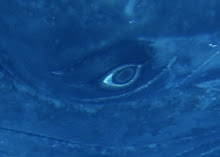An international effort to end the
brutal slaughter of dolphins in Peru has been initiated by a coalition of
marine conservation organizations headed up by
BlueVoice.org and Peruvian-based Mundo Azul. The campaign is aimed at fishing
practices that rely on killing dolphins to use as shark bait.
Video of the slaughter of dolphins
and the catch of undersized sharks off the coast of Peru was obtained by the
Peruvian NGO Mundo Azul in cooperation with Florida-based BlueVoice. Based on
calculations of the number of fishing boats and undercover testimony
documenting the numbers of dolphins taken it is estimated that between five and
fifteen thousand dolphins are killed yearly.
Stefan Austermuhle, president of
Mundo Azul, noted "It is illegal to kill dolphins under Peruvian law but
there is no enforcement so fishermen kill dolphins with impunity."
BlueVoice and Mundo Azul have conducted
undercover surveys of the sale of dolphin meat and found several locations
where illegal sales were taking place. But the number was few relative to years
past, perhaps indicating the sale of dolphin meat is being driven underground.
There will be continuous surveys of fish markets over the coming months ana
network of concerned citizens has been formed to report violations of dolphin
protection laws to Mundo Azul's office in Lima.
In addition a bounty of $500 is
being offered for information leading to the arrest and conviction of anyone
harming dolphins. "We want the fishermen to know they cannot carry on
their dolphin killing and meat sales without exposure", said Hardy Jones,
executive director of BlueVoice.
Jones presented to Stefan Austermuhle The
Dolphin Defender Award in recognition of his work documenting the killing of
dolphins in the shark fishery. Austermuhle spent 24 days aboard a small
Peruvian fishing boat to
Footage from his expedition will
be cut into a documentary film analogous to The Academy Award winning film The
Cove. "It is
my hope that our film will have a happy ending in which Peru rededicates itself
to the protection of dolphins and its marine resources," said Jones who
has produced more than 70 documentaries for television.
BlueVoice and Mundo Azul have called on the
Peruvian government to both enforce existing laws and enact legislation banning
harpoons on fishing boats. "Harpoons are used solely to kill dolphins and
banning them would save the lives of thousands of dolphins," said
Austermuhle.





